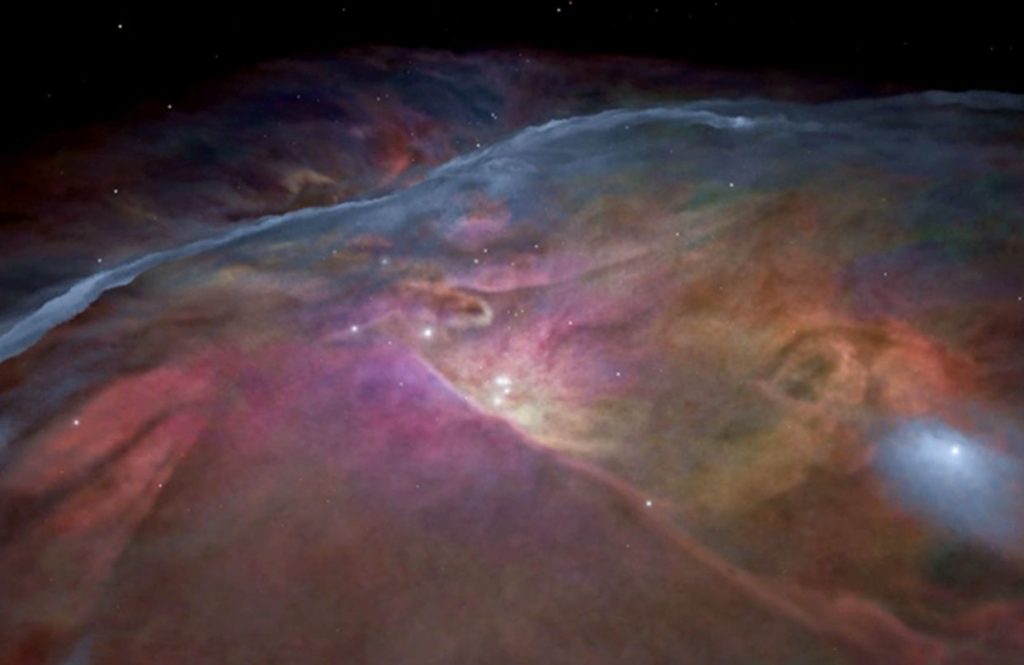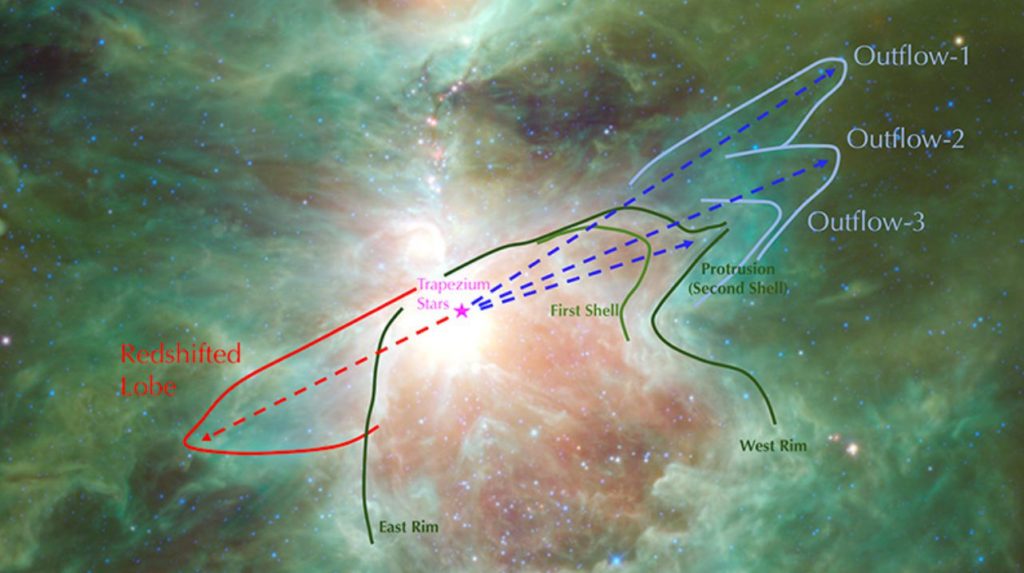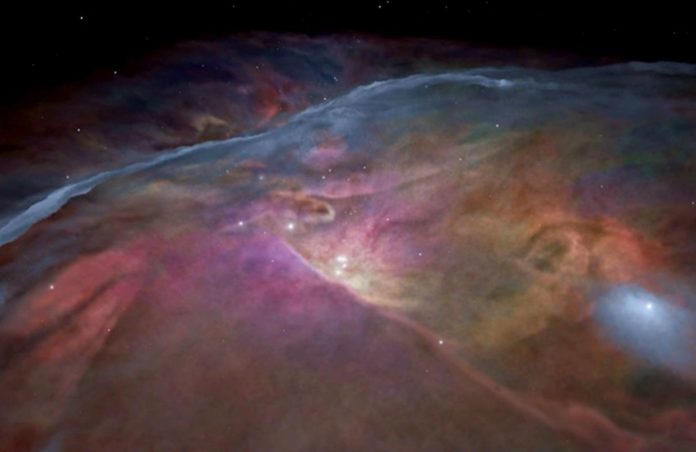The Orion Nebula’s huge star cluster may be bursting through the glowing veil of dust and gas known as Orion’s Veil, as observed by the Stratospheric Observatory for Infrared Astronomy (SOFIA).
The Trapezium stars are a huge group of stars within the Orion Nebula. Orion’s Veil is a bubble of dust and gas created by the Trapezium stars’ winds. Orion’s Veil is mostly sparse, with the majority of its gas concentrated on the bubble’s wall.

Recent investigations by SOFIA’s German Receiver for Astronomy at Terahertz Frequencies (GREAT) have revealed several surprising features in the wall, also known as Orion’s Veil shell, which is about a light-year thick and expanding toward us.
“The bubble – with a diameter of approximately seven light-years – should be,” according to the lead author Ümit Kavak, “an almost sphere-like structure, but we found a protrusion in its northwestern part.”
The findings of the research were published in Astronomy & Astrophysics.
In order to understand the protrusion’s origins and future, Kavak used the SOFIA measurements of ionized carbon emission to calculate its size, structure, and rate of expansion.

The protrusion, which is shaped like a “U” turned on its side, stretches well beyond Orion’s Veil. The protrusion’s chimney-like top seems to hint that the shell has already punctured it, and it is a likely location for the shell to do so.
“When you breach the Veil shell,” Kavak added, “you effectively start stirring a cosmic soup of gas and dust by adding turbulence.”
“This isn’t the most appetizing soup,” added Alexander Tielens, a researcher at Leiden University and a co-author on the article, “but it’s one of the ways to form new stars or limit future star formation.”
Star formation sites may be created or destroyed as a result of this turbulence’s impact on the density, temperature, and chemistry of the area around it.
They also found a second protrusion, this one weaker, that they hope to learn more about in the future. These protrusions collectively have an impact on the Orion Nebula’s overall morphology.
Source: 10.1051/0004-6361/202141367
Image Credit: NASA/JPL-Caltech/WISE Team; Kavak et al.
You were reading: Orion’s Veil Shell Seems To Be Broken – New Observations
